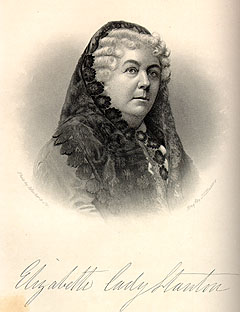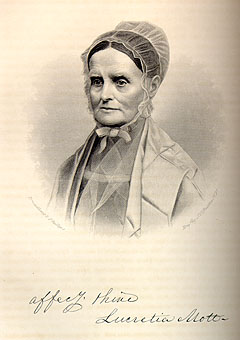The American Woman's Rights movement grew out of abolitionism in direct but
complex ways. The movement's early leaders began their fight for
social justice with the cause of the slaves, and learned from Anti-Slavery
Societies how to organize, publicize and articulate a political protest. It
wasn't long, however, before they also learned that many of the men who were
opposed to slavery were also opposed to women playing active roles or taking
speaking parts in abolitionist movement. The attempt to silence women at
Anti-Slavery Conventions in the United States and England led directly to
Elizabeth Cady Stanton's and Lucretia Mott's decision to hold the first Woman's
Rights Convention at Seneca Falls, N.Y, in June 1848. One of the articles of
belief proclaimed at that and subsequent conventions was that women were in some
sense slaves too. |
 Illustration from History of Woman Suffrage |
 Illustration from History of Woman Suffrage |
from History of Woman Suffrage (1881) from History of Woman Suffrage (1881) |
